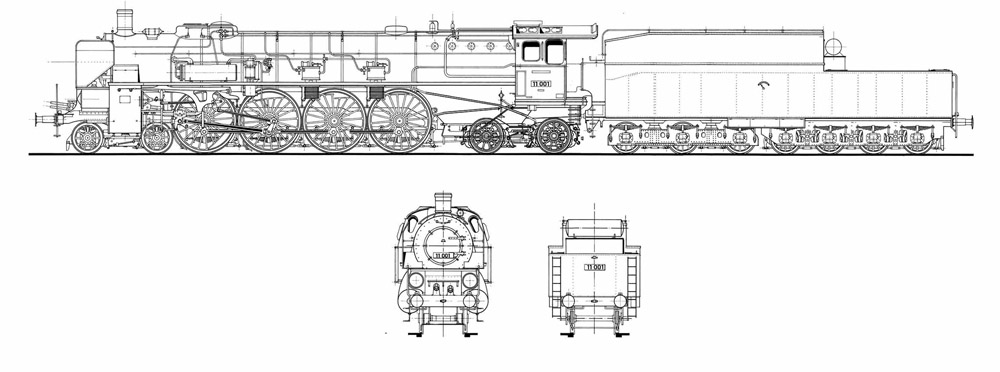



Country
Year
Class
Superheated steam 4 cylinder conpound
4-8-4

In 1913 the Baden railways found themselves having to solve a rather serious problem: the increase in weight of the compositions for the Rheingold trains, which they operated between Basel and Frankfurt, had put the beautiful and good Bad IVh (Br 18.3) on the ropes.
The result was a project, realized in only one example, which was immediately put into service with exceptional results.
This 4-cylinder, double-expansion train with 4 axles coupled to 2.10 m diameter locomotives allowed to tow any composition at over 140 Km/h if the line could bear it.
Unfortunately the war interrupted the experimentation. During the war period, the locomotive had been engaged in the rapid movement of troops from the eastern to the western front and was blocked by the armistice in French territory. It was immediately interned as a prey to war and used as a laboratory by Chapelon for the development of his Mountain. Afterwards, after being mistreated and due to a cracking of the cylinder block, it was sold to the Americans who were inspired to develop their remarkable Northern.
Exhibited only to the public in the U.S. in April 1932 at the Middlewest Farm & Railway Show in Winnemucca, it was dismantled due to the fact that no one had thought to fix that crack before restarting it. As it was not deemed economical to replace the cylinder block the machine was scrapped.
The drawing shows this remarkable machine in the numbering for which it had been provided by the Deutsche Reichsbahnen in the hope of getting it back, but it was never used. Remarkable the tender, which allowed to travel the entire route without supplies.
The coloring of the prototype was the classic Baden blue, with on the tender, very discreet, the Wappen (coat of arms) of the Grand Duchy of Baden.
